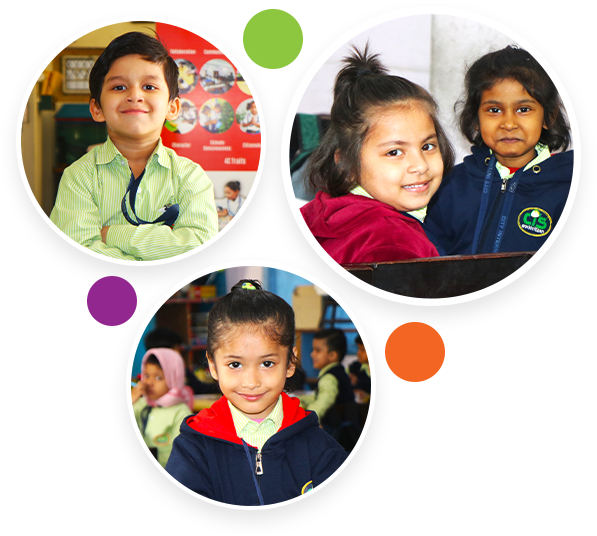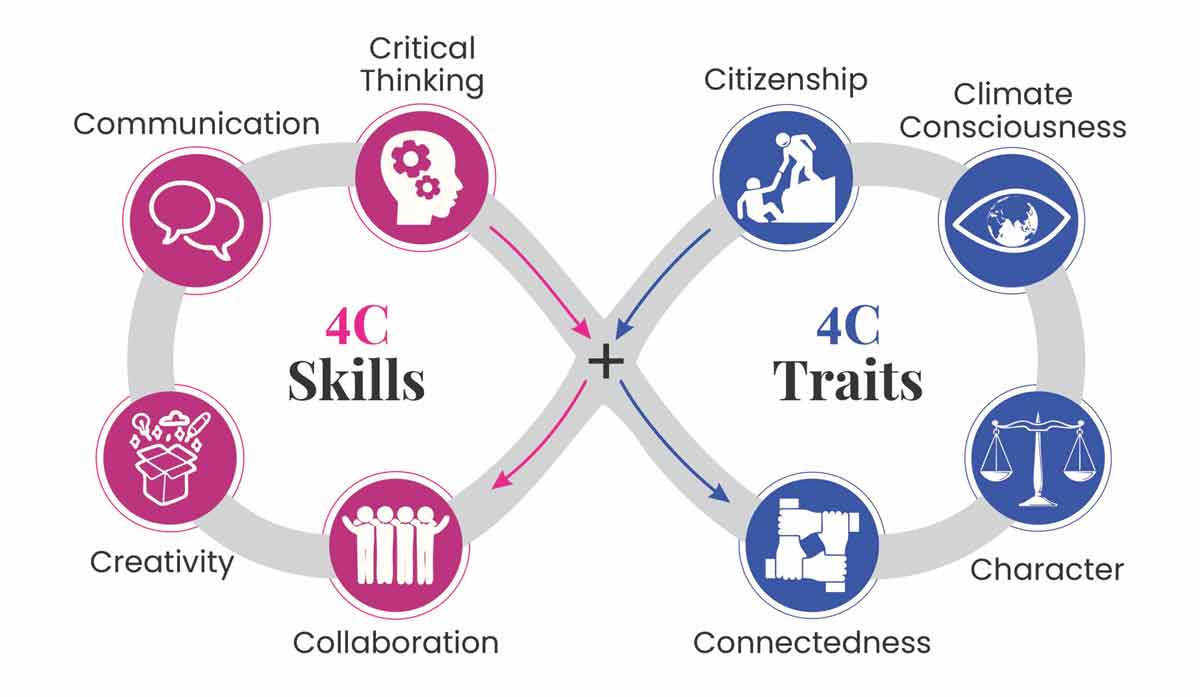
"A fun-filled learning journey, fostering curiosity, creativity, and foundational skills through play-based activities in a nurturing and joyful environment."

"Building confidence, critical thinking, and essential academic skills, empowering young minds to explore, learn, and grow with enthusiasm and curiosity."

"Encouraging independent thinking, leadership, and innovation, shaping responsible individuals ready to embrace challenges and succeed in their future ."

City International School's educational philosophy is fundamentally rooted in the guiding principle of "Compete with Yourself." This approach ensures that every child is encouraged and empowered to reach their fullest potential in all aspects of their development, both personally and academically. The school's commitment not only nurtures ambition but also sparks a profound sense of aspiration within each student, fostering an intrinsic motivation that drives them toward achieving success. Furthermore, the pedagogical methods employed by CIS are meticulously crafted based on extensive worldwide research and empirical evidence. This foundation is complemented by Dr. Gandhi's own research endeavors conducted in the UK, Iceland, and India, which culminated in a significant publication in the UK in 2017. Through this informed practice, City International School stands dedicated to cultivating a learning environment where every child's unique abilities can flourish

CIS fosters a comprehensive and progressive learning environment, equipping students with the essential skills they need to succeed in the 21st century. This includes fostering collaboration, communication, creativity, critical thinking, character, and citizenship.
ALfA seamlessly integrates the skills and traits of a twenty-first century learner. These 8Cs cannot be taught from a textbook, but rather acquired while working with each other in the everyday context of a classroom. The paired setting creates a safe environment in which learners feel free to share and express.

Caring for your children every day is a rewarding and vital responsibility. Providing them with love, guidance, and a secure environment helps nurture their development and well-being. Here are some essential aspects of everyday child care that parents and guardians should focus on






| Traditional Classroom | CIS Classroom |
|---|---|
| Transaction of learning is from teacher to student . Much rote memorisation. | Transaction of learning is from student to student. Learning is derived. No rote learning. |
| Children are grouped by skill level. | Random pairing ensures greater academic learning, a highly interactive environment, and development of 21st Century Skills. |
| Students work in whole class or groups, sit in rows facing the teacher. | Students work entirely in pairs; they face each other. Pairs are changed everyday. |
| Knowledge is abstract, with sometimes hands-on activities. | Children learn primarily through hands-on activities; use simple materials like matchsticks and ice cream sticks to learn entire mathematics. |
| Textbooks and workbooks are bulky. Designed for teachers to teach from. | Thin booklets, short modules with teacher prompts, are designed for children to learn by themselves. |

ALfA breaks the shackles of the industrial education system, revolutionizing the school experience through peer learning and hands-on activities.
“All students should be able to learn to read quickly so that they can maximize their academic potential and ALfA does that.” Jon Corippo Founder of EduProtocols
ALfA is a structured pedagogy, with modules custom-designed to facilitate paired and activity-based learning.
| CIS | Standard Textbooks | |
|---|---|---|
| Learning methodology | Student-led paired work Experiential learning about 80% of the time. | Teacher-led whole class Experiential learning about 20% of the time. |
| Grouping strategy | Random Pairing No child feels that there are low expectations of them. | Ability Grouping Those in 'remedial' group lose self-esteem. |
| Timetabling | Significant Flexibility Students can progress through the books at their own pace. | Detailed Prescriptions Rigid, many are left behind the curriculum. |
| Type of questions | Higher-order thinking Students pose questions for each other, developing cognitive skills. | Lower-order questions Matching, true & false, fill in the blank style. |
| Numeracy Methodology | Simple TLMs for All Ice-cream sticks & matchsticks are provided to enable all children to participate. | Insufficient TLMs Pictorial representation of activities in books, but without TLMs for everyone to participate. |
| Literacy Methodology | Known to Unknown Sound is derived from a picture, which is associated with a letter Substantial reading practice for each matra. 9-10 letters introduced per page. Writing introduced after reading. | Unknown to Known ‘A se Anaar’. One or at most two letters introduced per page Minimal reading practice for any given matra. Writing introduced simultaneously with reading. |